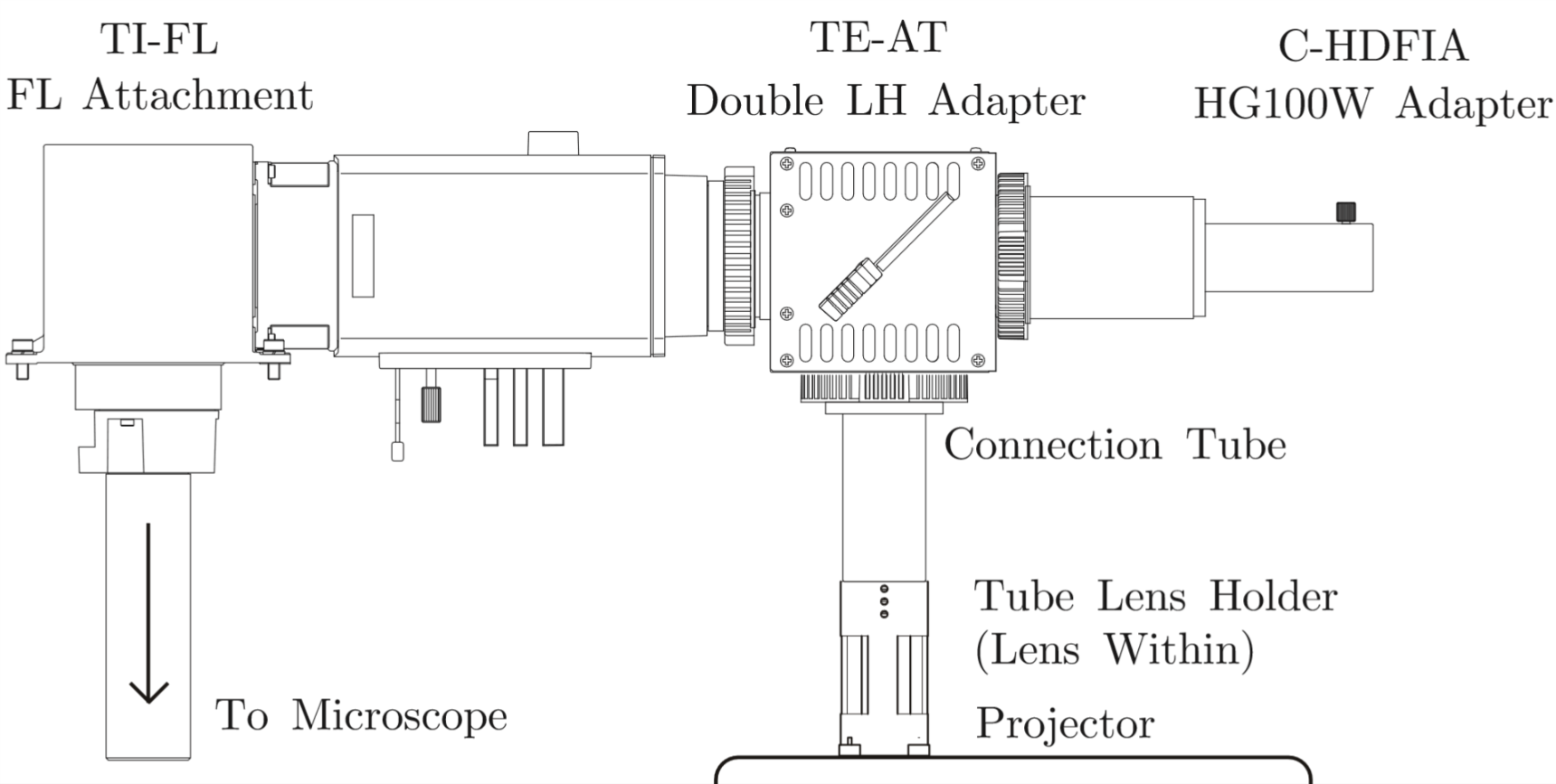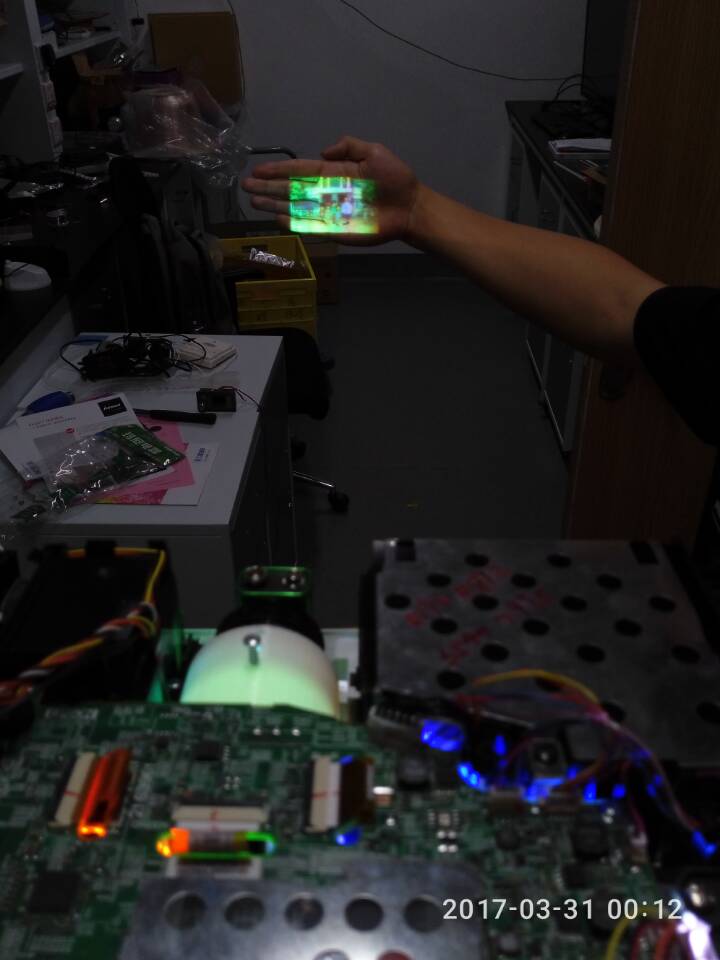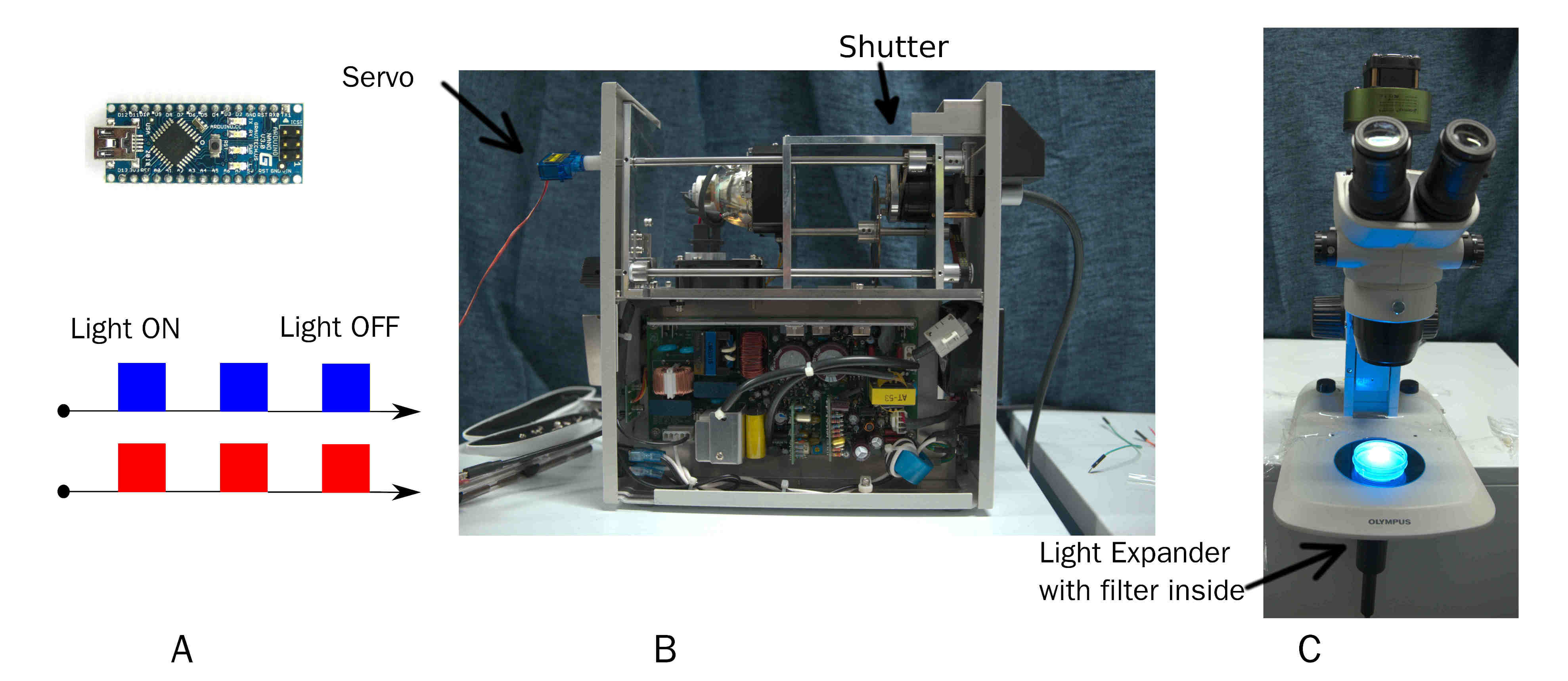Contents
Microfluidics
In our experiment, we want to research the neuron activity and behavioral response of Caenorhabditis elegans under a light stimulus of specific wavelength. Thus, we need to choose an appropriate, clear, efficient and convenient platform to study a group of worms as well as an individual one.
Microfluidics has a very tiny channel, which is the best to match with the size of C. elegans. There is no damaging for worms in Microfluidics. We design three parts of microfluidic chips the Selection Chip to choose appropriate sizes of worms, the Gaussian Plate to prove its olfactory receptor neuron pairs are not affected, and the Immobilization Plate to research the response of individual behavior and neuron activity. (Fig.1)
Light Modulator
Multiple devices of optics are designed and created for the various experiment requirements, such as, stimulate neuron of C. elegans, train C. elegans and induce C. elegans move in a special direction. All devices attempts to modulate the spatio-temporal pattern in an elegant and effective way. We constructed projector light source and modulate mercury lamp. Just let us start to play with light.
Projector Light Source
We need 395nm light to activate Calcium indicator protein GEM-GECO by Lumencor LED Illuminator. Then CoChR and Chrimson are activated by blue light and red light from LCD projector. LCD projector and LED Illuminator are merged by a double LH Adapter contained a semi-transparent mirror. Double LH Adapter connect to entrance of light in microscope. So we can use these two light source in the same time.
Protein are sensitive to the wavelength of light, it necessary to purify light of the projector. We buy and replace with new filter Chroma ET480/20X and Chroma ET630/20X, both are fixed inside projector. Di-mirror 89402bs and emission filter 89402m are been installed in Microscope filter wheel.
Software is most flexible part. A very easy method is to use a slide(Demo Slide), such as LibreOffice(Test on 5.4.2.2.0+ in Arch Linux) or Microsoft Office. The image and time pattern is stetted in slide, including color, intensity, pulse time etc.
We try develop a more powerful and hackable open source software suite called ColorMapping to track and activate multi C. eleganss or cell independently in one eye-filed. User can modify multi color, intensity, time, locations of light alternately in GUI. ColorMapping can be found in GitHub, which still is developing. ColorMapping contains camera part, projector part, user&calculation part. More detain can be found in GitHub Document and PDF[].
Arduino Modulate Mercury Lamp
A simple and effective device to output pulse of certain wavelength of light. On time and off time of pulse is custom by Arduino. Wavelength of light is changed by replacing filter before beam expander.









